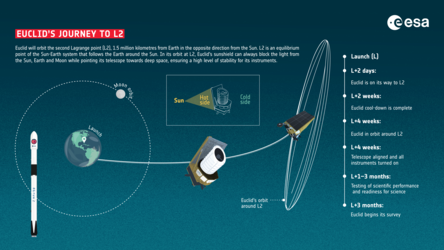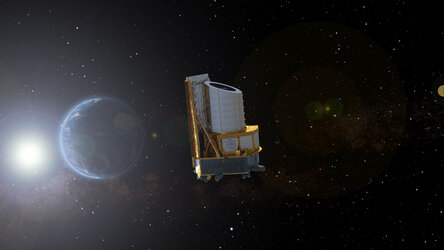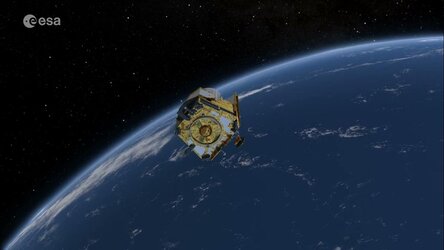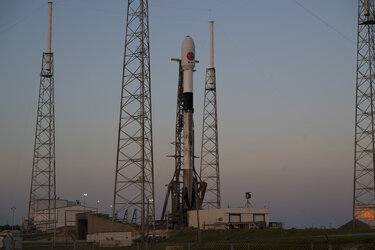
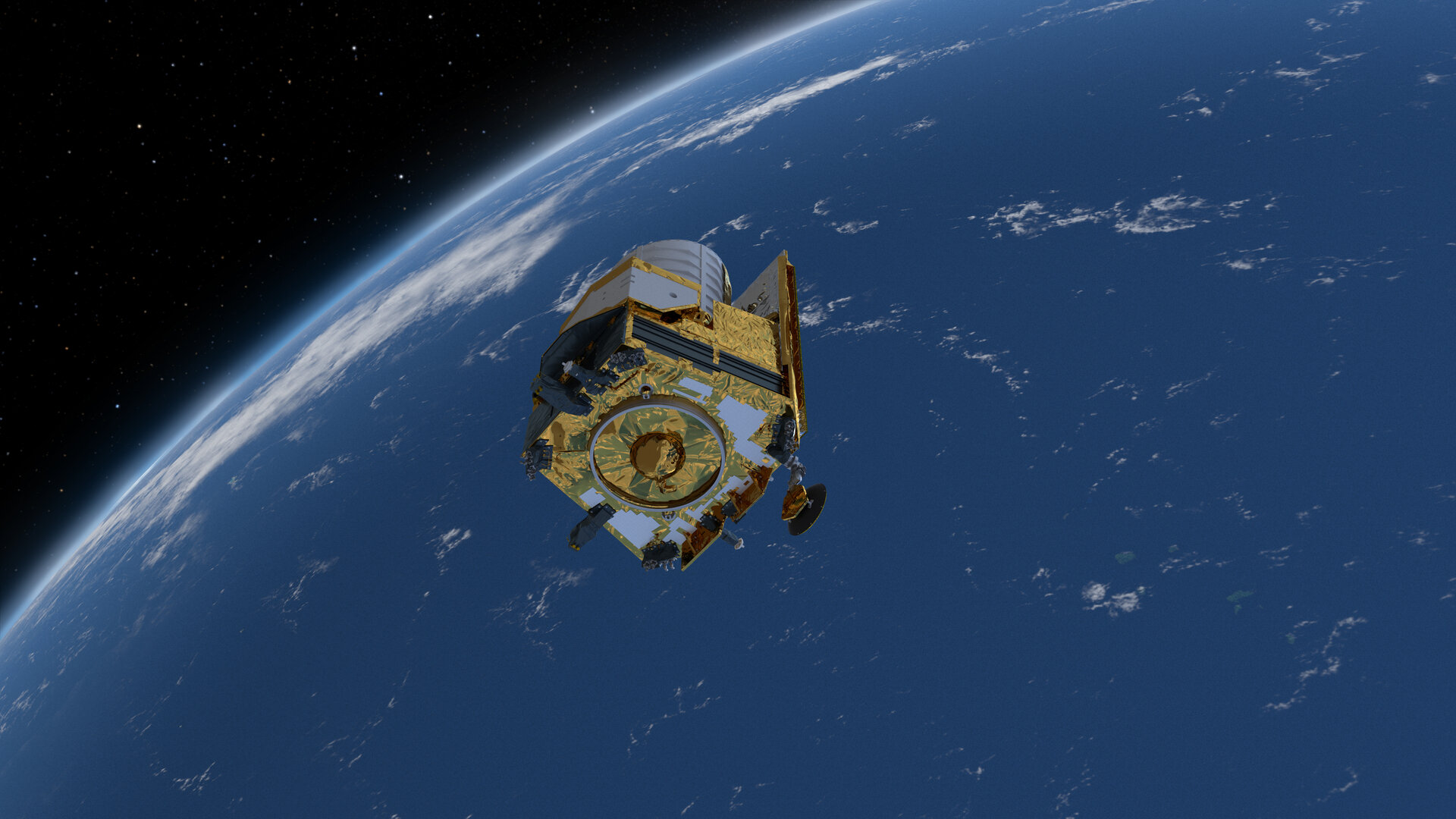
Euclid’s journey to L2
ESA’s Euclid mission travels from Florida towards the Sun-Earth Lagrange point L2. This stable equilibrium point of the Sun-Earth system is located 1.5 million kilometres from Earth in the opposite direction of the Sun. L2 is an equilibrium point of the Sun-Earth system that follows Earth around the Sun. In its orbit at L2, Euclid’s sunshield can always block the light from the Sun, Earth and Moon while pointing its telescope towards deep space, ensuring a high level of stability for its instruments.
This artist impression shows Euclid’s first moments in space. The satellite is set to arrive in orbit four weeks after launch. At L2 Euclid joins other space missions such as the NASA/ESA/CSA James Webb Space Telescope and ESA’s Gaia mission.
ESA's Euclid mission is designed to explore the composition and evolution of the dark Universe. The space telescope will create the largest, most accurate 3D map of the Universe across space and time by observing billions of galaxies out to 10 billion light-years, across more than a third of the sky. Euclid will explore how the Universe has expanded and how and how large-scale structure is distributed across space and time, revealing more about the role of gravity and the nature of dark energy and dark matter.

